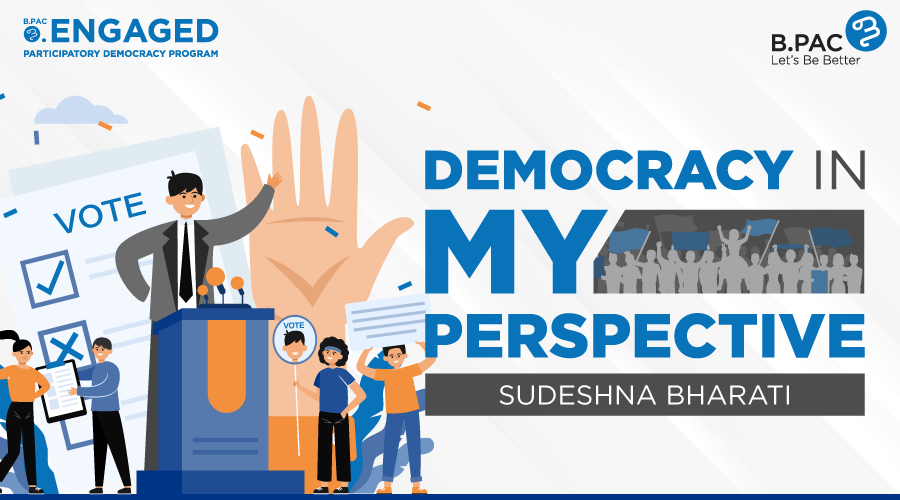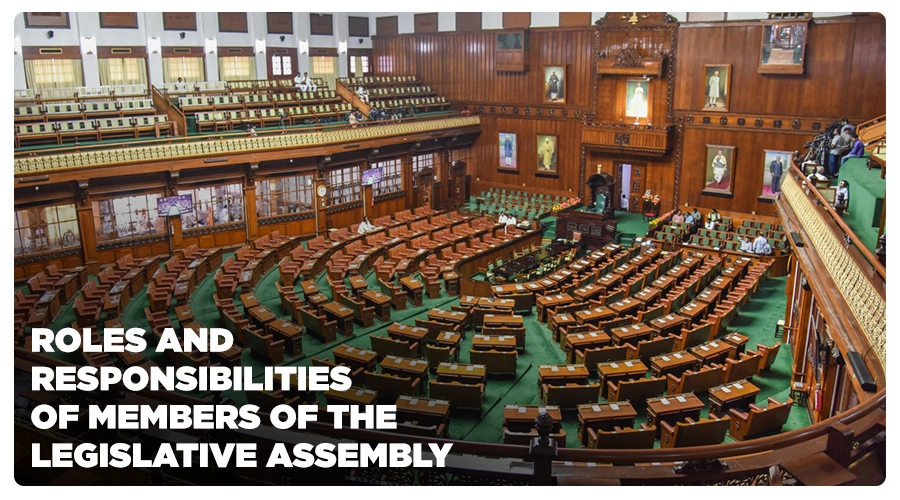In the last decade of the 20th century, the need for good governance has been an important and recurring theme in the literature dealing with human development – both research and popular. There is now a growing body of evidence, which shows that the quality of governance is related to differentials in growth and development. However, much of this literature deals with improving the performance of short-term normal government functions such as increasing efficiency of public services, accountability of bureaucracy, and enhancing transparency in decision making but ignores the larger and critical role of governments geared to the national future. Governance needs to be seen not merely in terms of managing resources and people during the tenure of a government but its ability to take a long-term view not only of the nation but the nation in the global context.
Attributes of good governance must be determined by the nation’s vision of the larger social and economic goal(s) and the value system it wants to promote. While a consensus among political parties on the former is more easily achieved and therefore possible to insulate it from the government of the day, to reach such a consensus in the case of the latter is extremely difficult. It is, however, possible to move towards a minimal common agenda across the spectrum of political thinking on a value system that would be promoted.
In the latter part of the 20th Century was an era of radical transformations, some brought about by internal compulsions and how the country was governed and partly due to technological change and the global context. These changes have reduced the predictability of the future. As Akio Morita, The former president of SONY said the only way to predict the future is to create it. But creating the future requires vision as well as commitment.
A working definition of governance could be “processes, systems, and structures that guide the social, economic, and political relationships”. The relationships could be viewed between government and market, government and citizen, government and private sector and Voluntary Organizations, elected and appointed officials, levels of governments (Union, state and local), and between legislative and executive structures.
What is Good Governance?
In the 1992 report entitled “Governance and Development”, the World Bank set out its definition of good Governance.
It defined Good Governance as “the manner in which power is exercised in the management of a country’s economic and social resources for development”.
- Good governance has 8 major characteristics:
- Participatory
- Consensus-oriented
- Accountable
- Transparent
- Responsive
- Effective and efficient
- Equitable
- Inclusive and follows the rule of law.
- It assures that corruption is minimized, the views of minorities are taken into account and that the voices of the most vulnerable in society are heard in decision-making.
- It is also responsive to the present and future needs of society.
Initiatives for Good Governance in India
Right to Information
As a party to the International Covenant on Civil and Political Rights (ICCPR), India is under an international obligation to effectively guarantee citizens the Right to Information as per Article 19 of the ICCPR. RTI Act, 2005 marks a significant shift in Indian democracy. It gives greater access of the citizen to the information which in turn improves the responsiveness of the government to community needs. The right to information promotes openness, transparency and accountability in administration by making the government more open to public scrutiny.
E-Governance
The National e-Governance Plan envisions to make all government services accessible to the common man in his locality, through common service delivery outlets and ensure efficiency, transparency & reliability of such services at affordable costs. E-Governance effectively delivers better programming and services in the era of newly emerging information and communication technologies (ICTs), which herald new opportunities for rapid social and economic transformation worldwide. E-Governance has a direct impact on its citizens who derive benefits through direct transactions with the services offered by the government.
Programs launched under E-Governance:
Pro-Active Governance and Timely Implementation (PRAGATI), Digital India Program, MCA21 (to improve the speed and certainty in the delivery of the services ministry of Company Affairs), Passport Seva Kendra (PSK), online Income tax return, etc. Focus on ‘Minimum Government, Maximum Governance’.
Legal Reforms –
The Central Government has scrapped nearly 1,500 obsolete rules and laws with an aim to bring about transparency and improve efficiency. Reform criminal justice and procedural laws with a focus on pre-institution mediation.
Ease of Doing Business –
Steps were taken by the government to improve business conditions including legislation meant to improve the country’s business environment and policy ecosystems (such as the Bankruptcy Code, the Goods and Services Tax or GST, and the anti-money-laundering law). The government has launched the ‘Make in India’ initiative.
Decentralization – Centralized Planning Commission was abolished, replacing it with the think tank called the National Institution for Transforming India (NITI Aayog), which would usher in an era of “cooperative federalism”.14th Finance Commission increased the tax devolution of the divisible pool to states from 32% to 42%for the years 2015 to 2020. It provides more freedom for states to initiate schemes based on local factors.
Police Reforms – Modernizing police forces and implementing the Model Police Act of 2015.
Reform of the First Information Report (FIR) lodging mechanism, including introducing filing e-FIRs for minor offenses.
Launch a common nation-wide emergency number to attend to the emergency security needs of citizens.
Aspirational Districts Programme –
The Aspirational Districts Programme (ADP) was launched in January 2018 to transform the lives of people in the under-developed areas of the county in a time-bound manner. Anchored in NITI Aayog, the program is aimed at transforming 115 most backward districts with focused interventions in the field of health and nutrition, education, agriculture, and water management, financial inclusion, and skill development.
Good Governance Index –
The Good Governance Index Was launched on the occasion of Good Governance Day on 25 December 2019. The Good Governance Index is a uniform tool across the States to assess the Status of Governance and the impact of various interventions taken up by the State Government and Union Territories. The objectives of the Good Governance Index are to provide quantifiable data to compare the state of governance in all states and Union Territories, enable states and Union Territories to formulate and implement suitable strategies for improving governance and shift to result-oriented approaches and administration.
CITIZEN ENGAGEMENT –
Citizen participation means co-management, community management, self-governance, and looking at citizens as owners. By voting, citizens are participating in the democratic process. Citizens vote for leaders to represent them and their ideas, and the leaders support the citizens’ interests.
Citizens are important stakeholders and play a critical role in advocating and enabling public institutions to become more transparent, accountable, and effective and suggest innovative solutions to complex development challenges. Citizen engagement is at the core of good governance. Mygov.in is a platform to engage citizens and get their input and suggestions for various government policies and plans in India. MyGov platform provides an opportunity to citizens across the world to engage directly with the government departments, policymakers, and implementers. MyGov is planned as the key platform for all citizen engagement needs of the country across various departments and ministries. The Presence of such a digital platform in a democratic country reflects a willingness on the part of the government to share information and make citizens a partner in decision making. This chapter elaborates on the need, discusses the MyGov initiative, compares it to other such initiatives globally and highlights major issues and concerns in the citizen engagement process.
Challenges to Good Governance
- Criminalization of Politics
- Corruption
- Gender Disparity
- Growing incidence of violence
- Delay in Justice
- Centralizations of Administrative System
- Marginalization of Socially and Economically Backward People
Conclusion
The effective functioning of governance is the prime concern of every citizen of the country. The citizens are ready to pay the price for good services offered by the state, but what is required is a transparent, accountable, and intelligible governance system free from bias and prejudices. There is a need to reformulate our national strategy to accord primacy to the “Gandhian principle of Antyodaya” to restore good governance in the country.
India should also focus on developing probity in governance, which will make governance more ethical. The government should continue to work on the ideals of Sabka Saath, Sabka Vikas, and Sabka Vishwaswhich will lead to inclusive and sustainable development.





